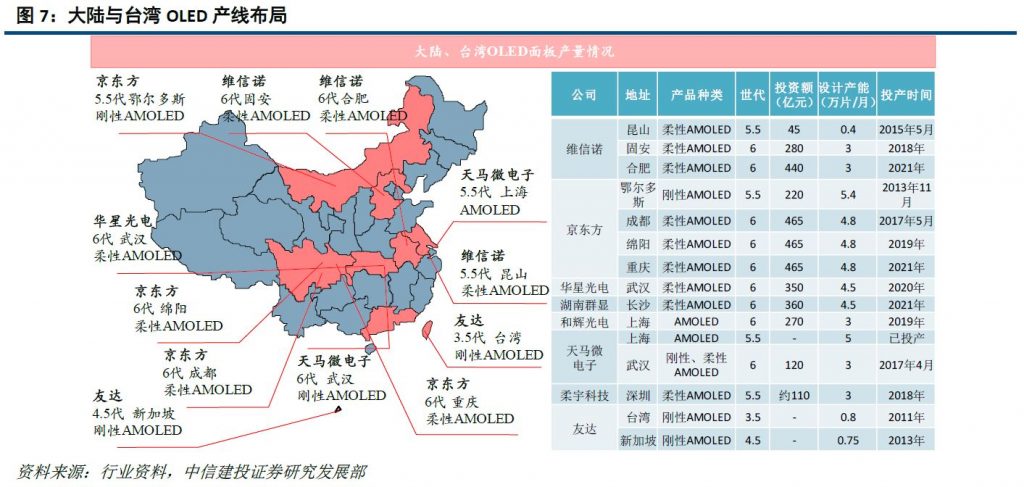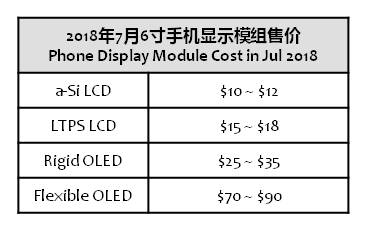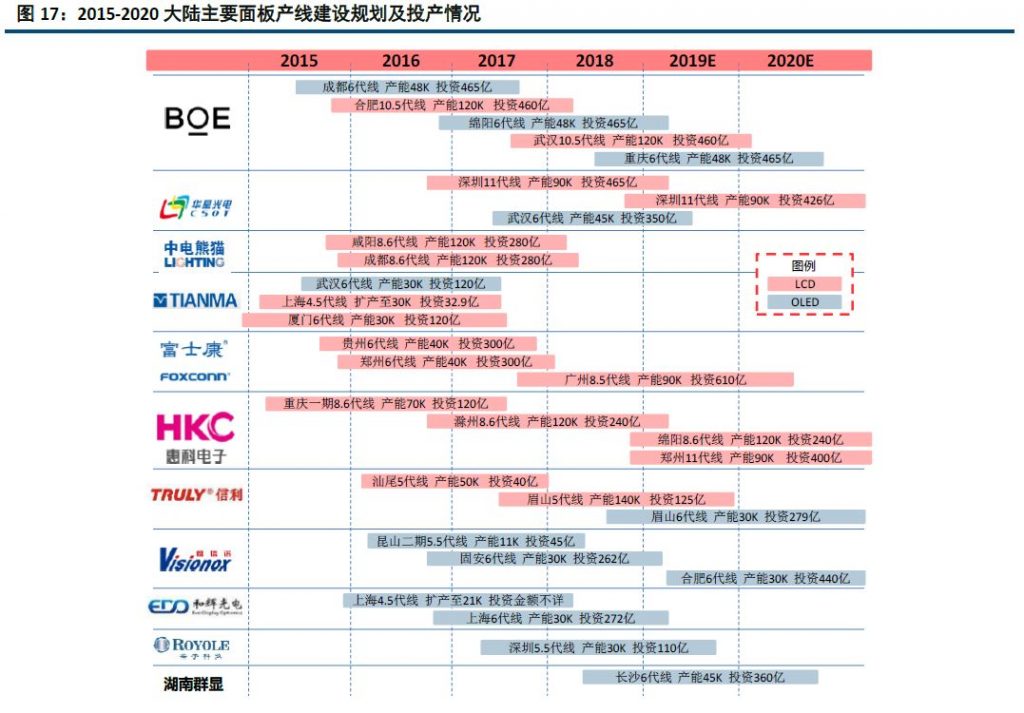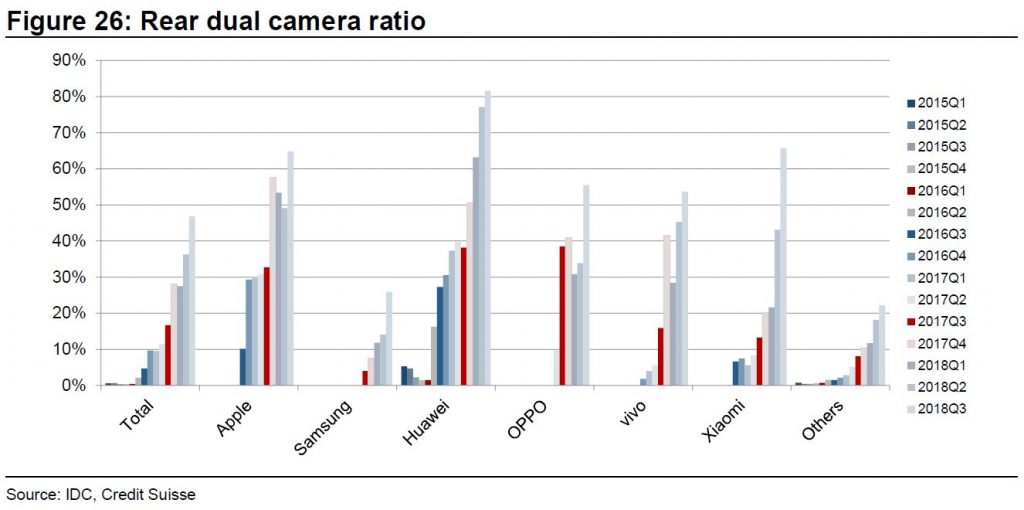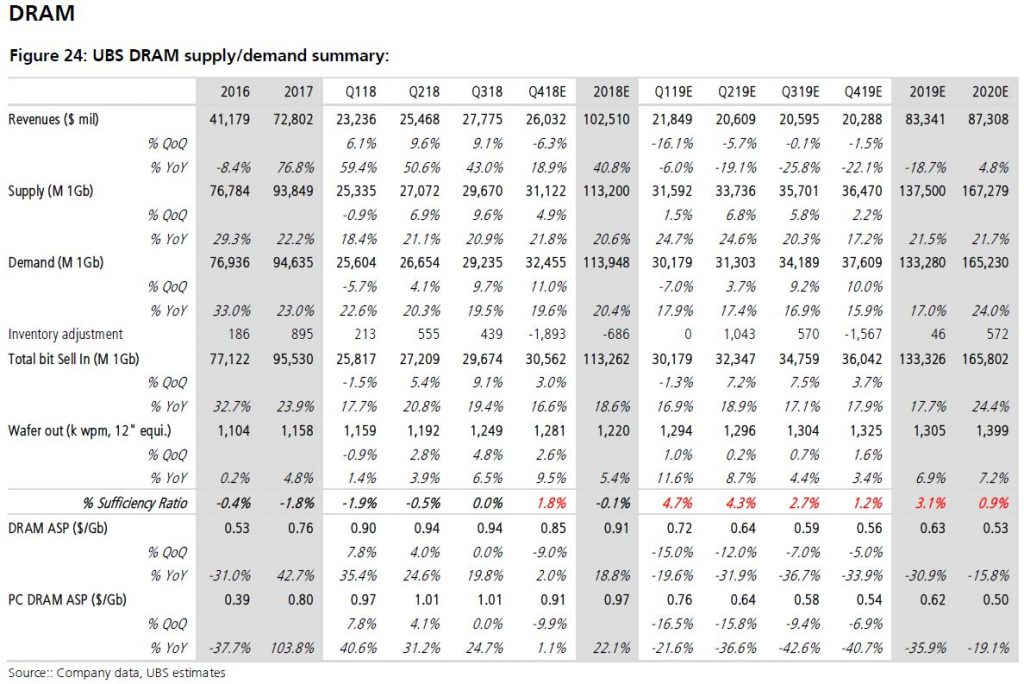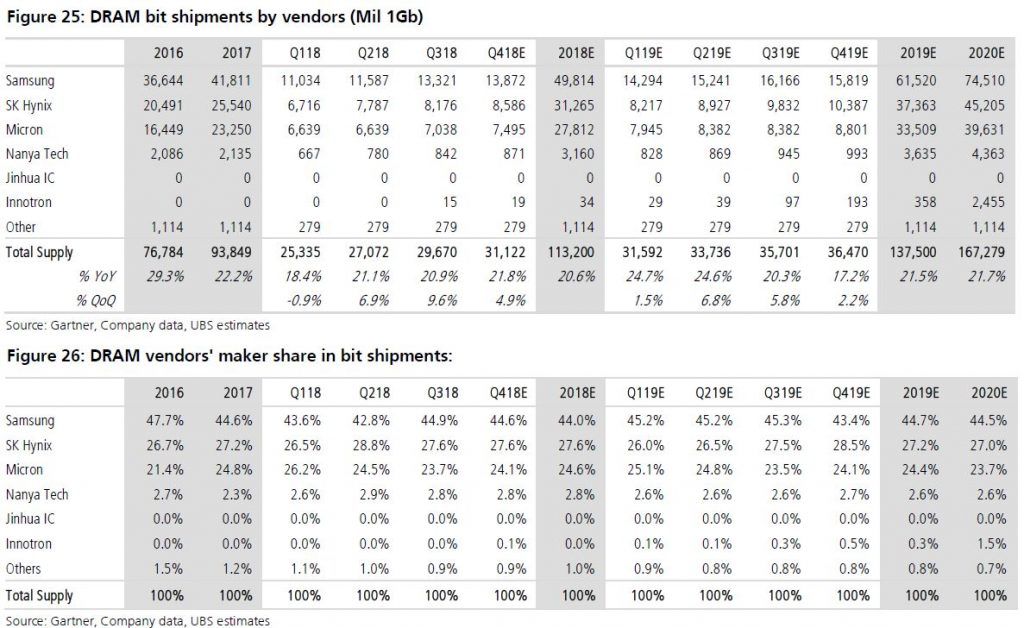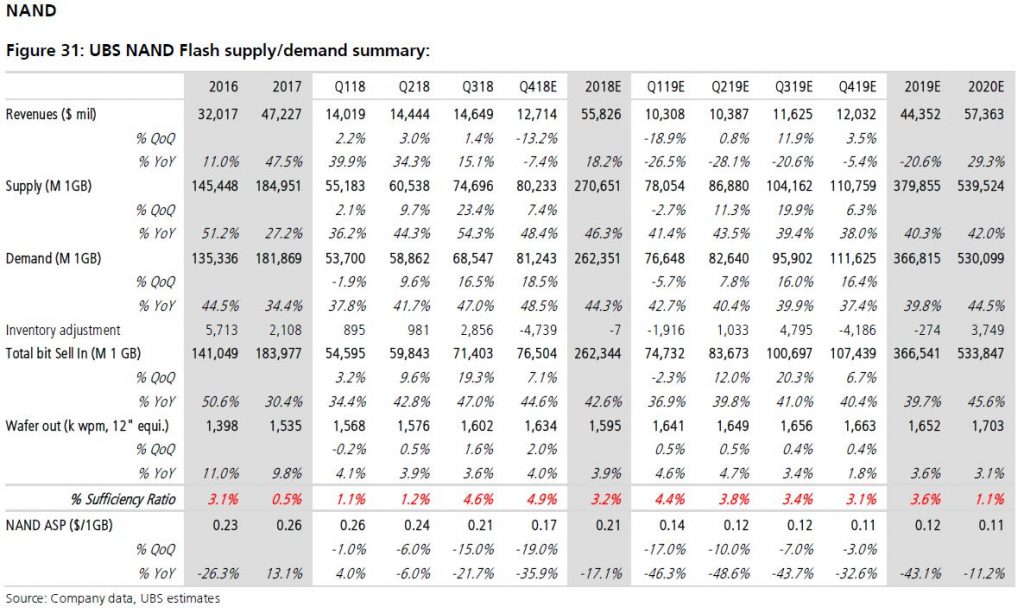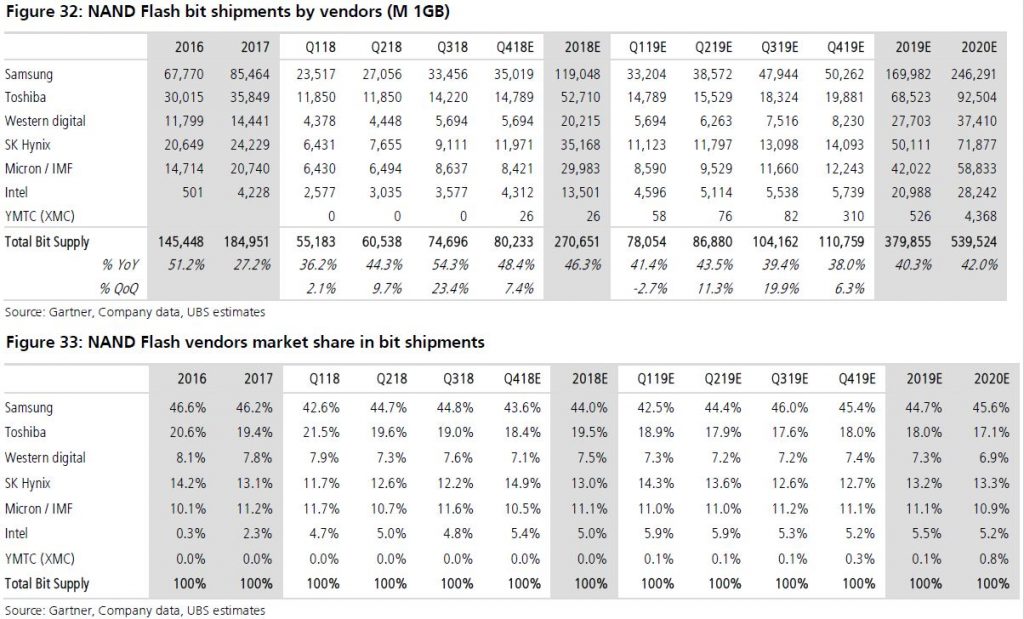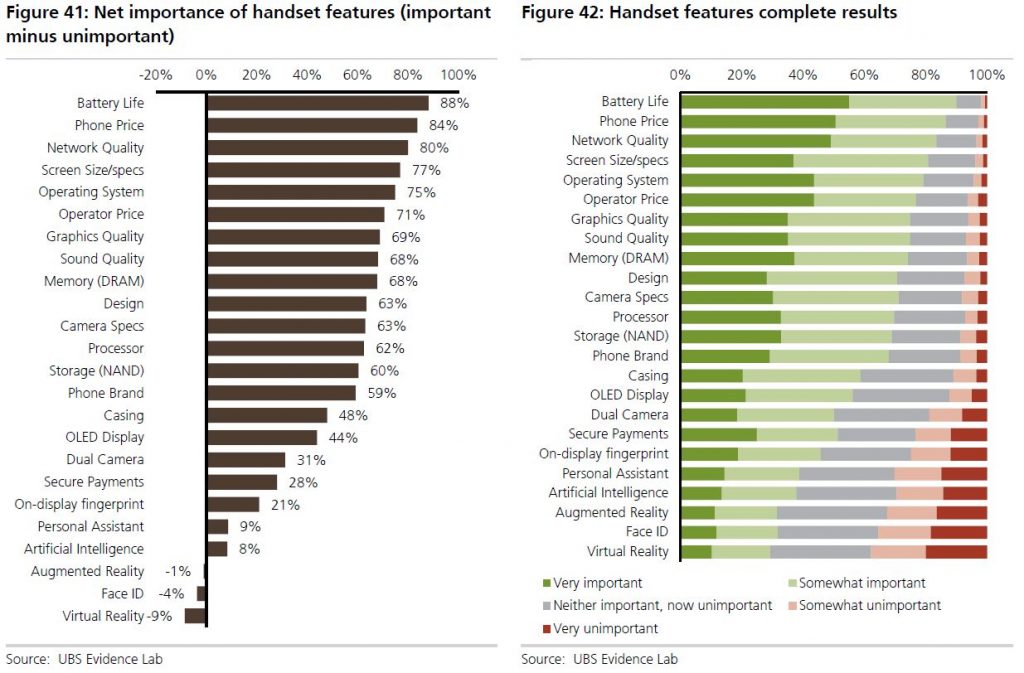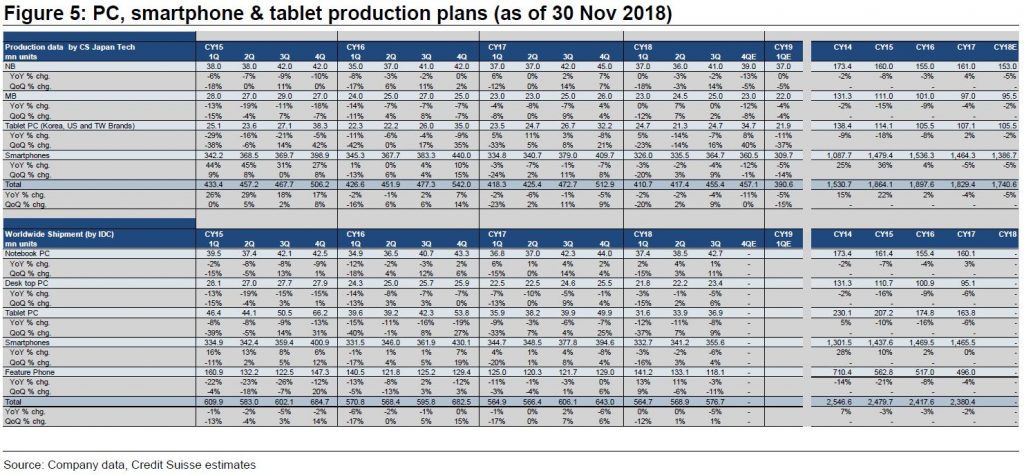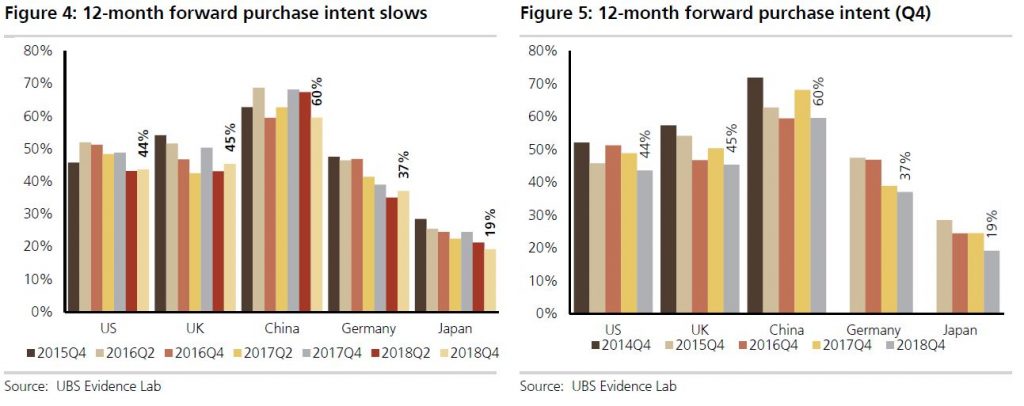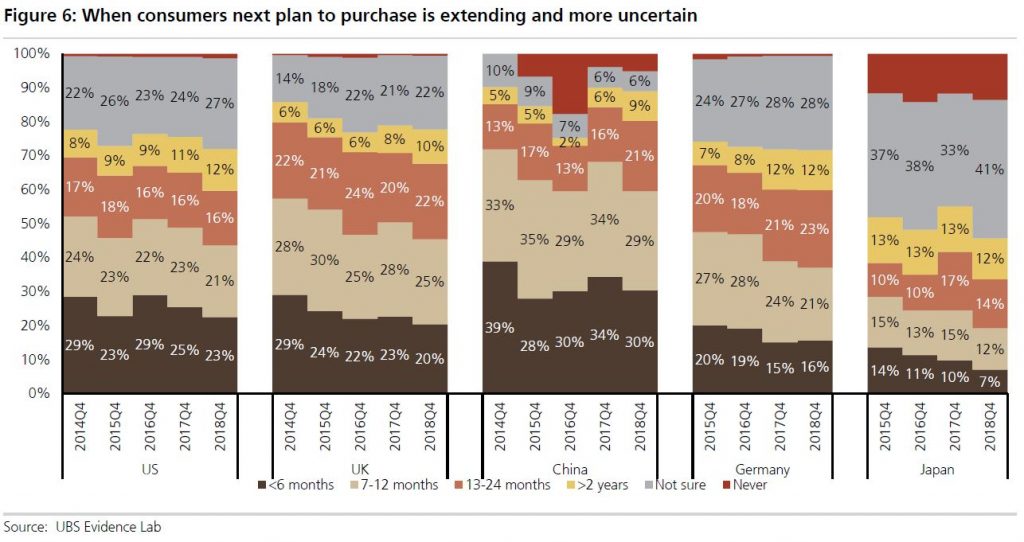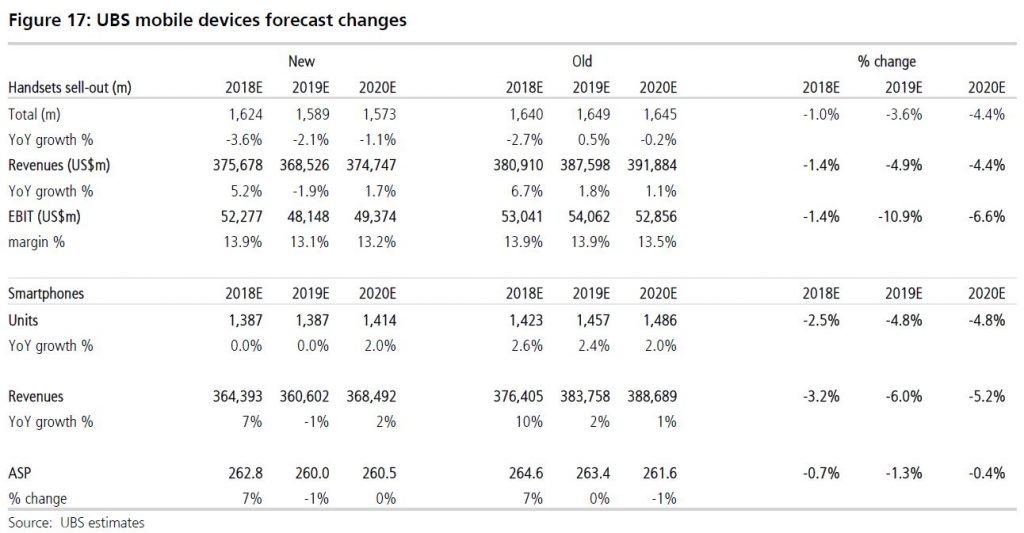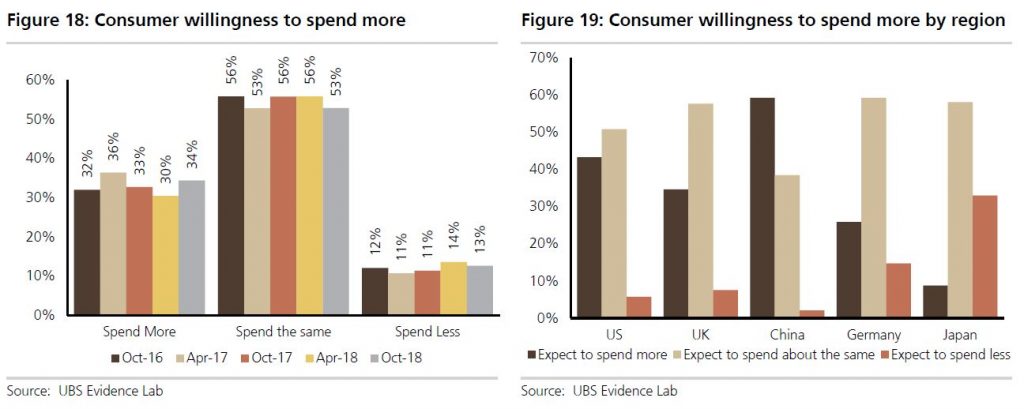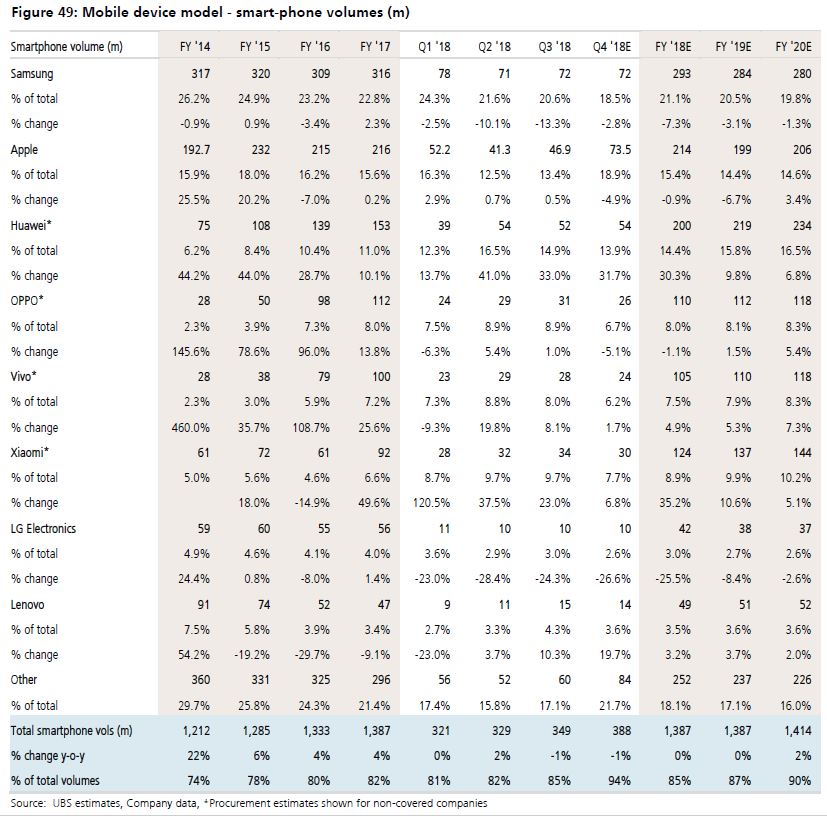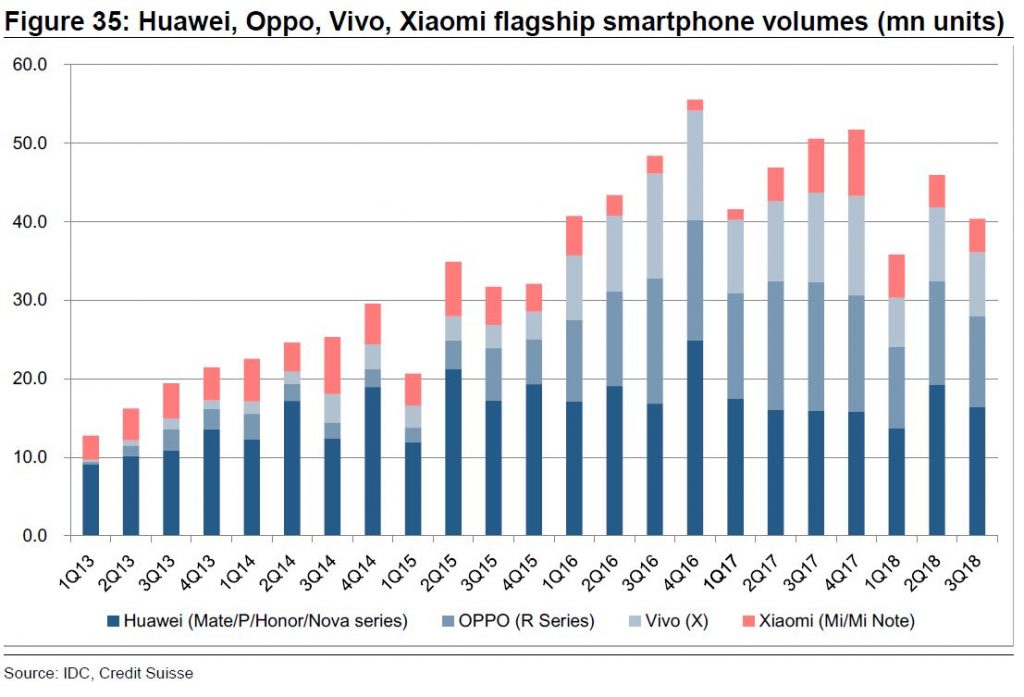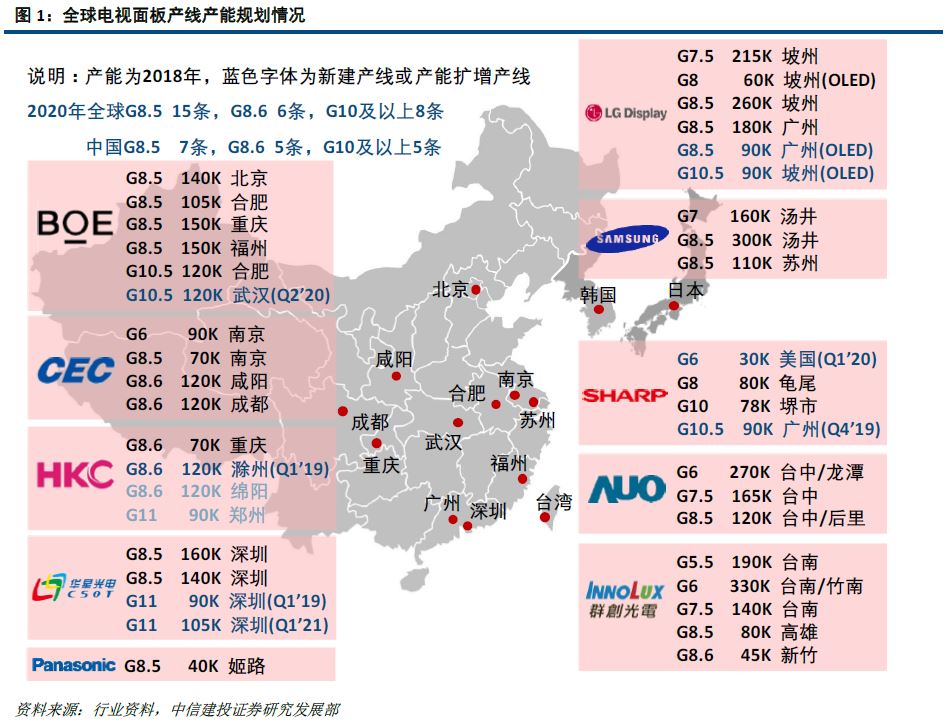
12-16: A series of numbers / data consolidated from various reports, and this will be done with best effort on weekly basis.
Touch Display
Following the slowdown of the investment in LCD higher-generation production lines in Korea, Mainland China will be the one that adds new production lines. In 2019, new additional lines include CSOT’s Shenzhen Gen-11 (T6), HKC’s Cangzhou Gen-8.6, Foxconn Sharp’s Guangzhou Gen 10.5 IGZO line. Year 2019 will also be the investment peak of the LCD production line in recent years. In addition of BOE’s Gen 10.5 in Hefei, the company will add three Gen 10.5+ panel production lines from 2019. This will also be expected to drive further penetration of 65” / 75” applications. (China Securities)
Mainland China’s investment in OLED production lines is second only to South Korea. With the improvement of technology maturity and the penetration of market applications, the domestic production line layout continues to increase. In Mar / Oct 2018, BOE and Visionox are in Chongqing (capacity 48K) and Hefei (capacity 30K), respectively, then announcing an additional Gen-6 flexible OLED. In addition to Gen-5.5 and Gen-6 lines, Samsung has planned about 384K units production capacity in Mainland China. (China Securities)
Rigid OLED is still mainstream for mobile phone. China Securities believes that it is due to the higher cost of flexible OLED. In 2018 Jul, 6” smartphone display module cost, flexible OLED is about USD70~90, while Rigid’s is about USD25~35. (China Securities)
Since 2017, China domestic panel manufacturers have begun investing heavily in OLED panel production lines. Currently, BOE, Tianma, Visionox, EverDisplay, CSOT, Truly, Royale, etc are investing in OLED panels. According to China Securities, the investment scale of OLED panels from 2018 to 2020 will reach CNY74.5B / CNY111.5B / CNY103.3B, respectively, and LCD panels total investment will reach CNY197.5B / 236.5B / 167.9B, respectively. (China Securities)
Camera
Credit Suisse says in their previous survey report that Samsung is targeting a multi-camera weighting of 50% (triple camera 20%, dual camera 30%) in 2019, but their latest survey indicates a growing possibility of a 70% target (triple / quadruple camera 20%, dual camera 50%). Samsung appears to be currently planning for around 10 triple- or quadruple-camera models as well as phones with 5x zoom folded optics cameras and pop-up cameras. The company is considering 48MP-16MP-13MP and 48MP-10MP-5MP for triple camera models while also looking at 48MP-8MP-5MP, 32MP-8MP-5MP, and 16MP-8MP-5MP. (Credit Suisse report)
Memory
According to UBS, The DRAM industry is now fairly stable in terms of structure, with 3 players (Samsung, Micron and SK Hynix) accounting for 97% of bit supply in 2017. It is also a mature industry, with demand bit growth CAGR of 20% over the next 5 years. This would suggest that Samsung (distant leader with 45% bit supply share in 2017) will continue to favor cash flow maximization. This does not mean, however, that the DRAM industry gets a-cyclical as the pace of tech migration & limited wafer capacity increases, combined with inventory cycles, can create a temporary mismatch with demand. UBS would also expect Samsung to go through temporary re-emphasizing of market share protection, as seems to be the case in 2019. (UBS report)
According to UBS, the NAND flash industry is still fast growing (UBS expects 42% over the next 5 years). This makes necessary wafers capacity investments, which can accentuate nearer term cyclicality. Moreover, the NAND industry is less concentrated than DRAM, with 6 key players (Samsung, Toshiba, WD, Micron, Intel, SK Hynix) and 5 process families (Toshiba / WD being in a technology JV). UBS sees possible sources for disruption in the NAND industry. (UBS report)
Battery
As part of the UBS Evidence Lab smart-phone survey, consumers were asked about the importance they place on the various features within a smart-phone. Despite the innovation seen in 2018 in devices, feature perceptions have essentially not changed from the last survey in 2Q18. The Top 3 features remain the same with battery being the most important followed by phone price and network quality. (UBS report)
Phone
Credit Suisse lowers its global smartphone production forecast again. They are now projecting 2018 smartphone production of 1,387M units, down 5% from actual 2017 production of 1,464M units, which was likewise a 5% YoY decrease. Their latest downward revision reflects the 4 biggest Chinese smartphone makers having slashed their production plans in Nov 2018. On a quarterly basis, they forecast 4Q18 and 1Q19 smartphone production of 360M units (−1% QoQ/−12% YoY) and 310M units (−14%/−5%). (Credit Suisse report)
The 2 charts illustrated by UBS are in their view the 2 most important data points from the survey – they show the next 12-month purchase intent for smart-phones and it has been on a continuous slowdown in recent iterations of the survey. On average in the 4Q18 survey they have found that 41% of respondents are planning to upgrade in the next 12-months, down from 46% in 2017 survey. (UBS report)
Within the mix of responses UBS finds that, instead of purchasing in the next 12 months, UBS has seen an increase in uncertainty on when consumers plan to purchase and consumers who say it will be more than 1 year until they plan to next purchase, and also a greater proportion of consumers who are unsure when they will next purchase a new smartphone. (UBS report)
UBS is lowering their unit forecasts for 2019 to 0% unit growth and also lower 2018 as a consequence of the much softer than expect 2H18 ramp from Apple that is being seen. They continue to believe that 2020 could see some recovery in unit growth as they see innovation such as 5G and foldable displays as providing the opportunity to drive growth in the industry. Without this UBS sees a risk the market will continue to slow. (UBS report)
On the whole, UBS’ analysis of the survey continues to support that smartphone ASPs can increase in the market and surprisingly they actually found an increase in the % of users expecting to spend more both YoY and compared to the 2Q18 survey as can be seen in the charts. China remains the most aspirational market, closely followed by the US and the UK. Germany is much more balanced and Japan is the only region that is expecting to spend less in future. (UBS report)
UBS lists their forecast for smartphone volume in 2019 till 2020 by vendors. (UBS report)
Credit Suisse’s 2018 production volume forecasts as of the current survey are as follows: Huawei 205M units (210mn units for the previous survey), OPPO 105M units (115M units), vivo 98M units (111M units), and Xiaomi 128M units (133M units). It appears that OPPO and vivo have increased production of their midrange handsets owing to weak sales of their high-end autumn models, and that they have pushed back the launch of their spring models from Feb–Mar 2019 to Apr–May 2019. (Credit Suisse report)

